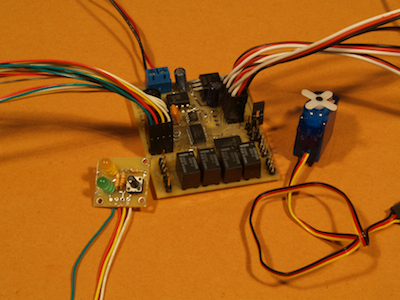There are a lot of questions flying around in discussion forums. Regular appearances are made by the likes of "What size turnouts should I use", "What colour should my fascia be", "How do I lay track", and "What rail code should I buy"? Reference Byron Henderson's slightly tongue-in-cheek post
What sized t-shirt...?.
What can be considered very basic questions are asked for a variety of reasons. While some instances are a real search for answers they can also arise from pure laziness, the desire to pontificate, or even attempts at bushwhacking the self-proclaimed experts who populate all corners of the Internet.
A real tyro needs this basic information just to get started. Magazines like Model Railroader & Railroad Model Craftsman and 'getting started' books by Kalmbach & Carstens Publishing excel at presenting introductory material in an easy-to-digest, highly pictorial manner. The big trouble you run into on a typical forum is that one seemingly simple question will generate dozens of responses, often contradictory or even incomprehensible to a newbie. It's great if the inquirer can manage to sift through the resulting text to figure out what to do but it may leave them more confused and worse off than they started.
For many of these questions, the answer is going to be based on personal preference (what scale, what colour, what era) and no one (especially a stranger, even an expert one) will be able to tell you what your personal likes and dislikes are. The newbie will simply have to decide for his or herself. This will require personal effort in historical research, visits to clubs/layouts/real locations, watching videos, and simply reading books & magazines on the subject(s) coupled with some trial-and-error, hands-on work in order to get some idea of what's involved and how capable you are.
Once the initial hurdles of a) simply understanding model railroad specific terms and phrases, and b) learning about your own preferences are overcome, the newbie will be able to ask some informed questions and (hopefully) make better sense of the answers. Choice of an approach (freelance, prototype, protolance) and an honest evaluation of your own skills will shake out some of the remaining details (era, theme, turnout #'s, rail code, etc.)
The Internet has made it tremendously easy to cast a question out into a vast pool of knowledge but it useful to remember that, when fishing in a pool, you do not always hook into something you can digest. Don't rely on others to tell you what to do, or expect the "right" answers to arrive at the surface without getting your own feet wet.


